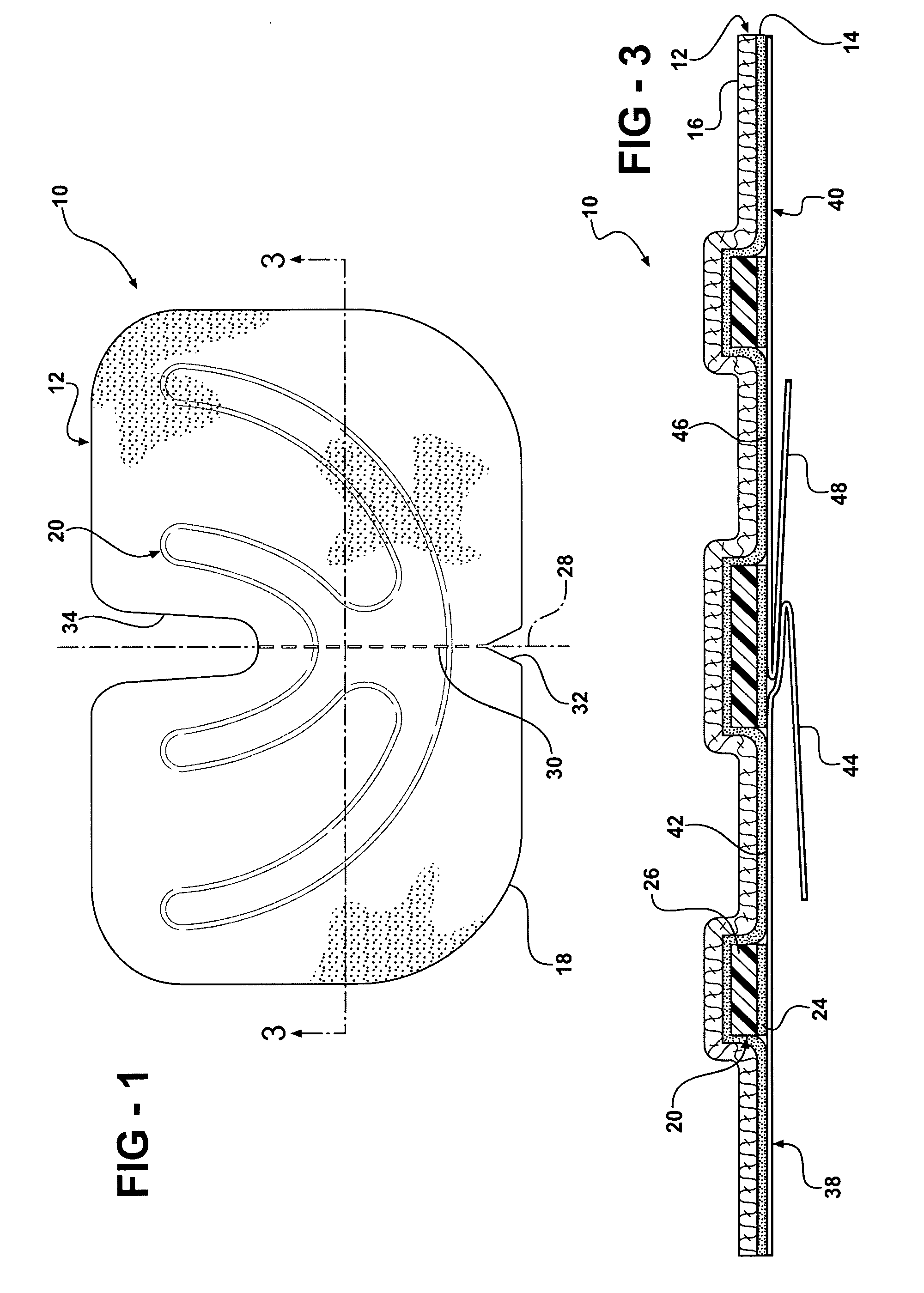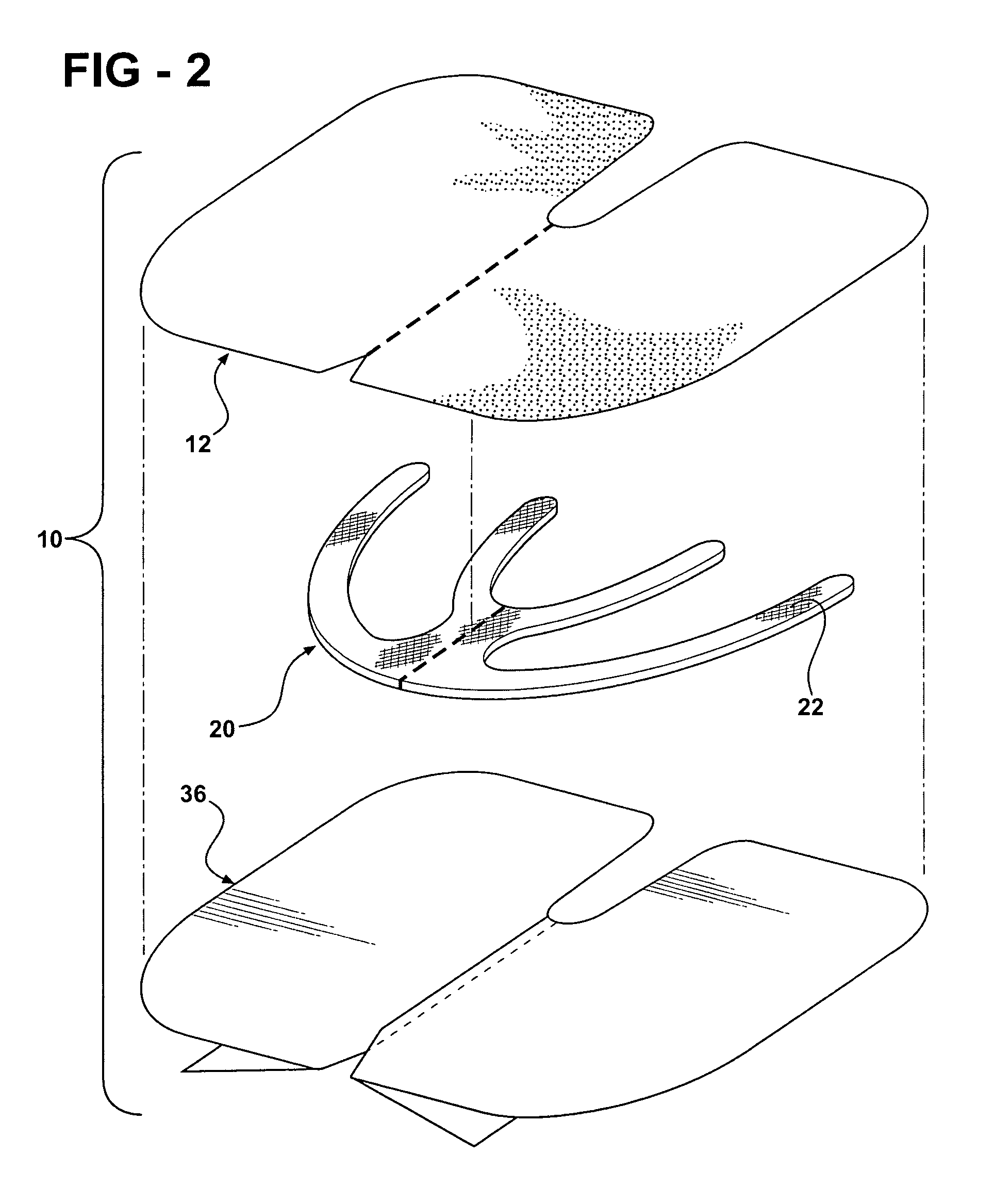Reinforced closure anchor
a technology of reinforcement and closure, applied in the field of medical dressings, can solve the problem of the catheter hub being difficult to slide out,
- Summary
- Abstract
- Description
- Claims
- Application Information
AI Technical Summary
Benefits of technology
Problems solved by technology
Method used
Image
Examples
Embodiment Construction
[0017]Referring now to the drawings in detail, numeral 10 generally indicates a reinforced closure anchor in accordance with the invention. The reinforced closure anchor 10 may secure a portion of a medical dressing, such as a portion at which medical tubing exits from underneath the dressing. The reinforced closure anchor 10 counteracts tugging forces from any hemispherical vector direction that may be applied on the medical tubing and helps prevent the tugging forces from pulling the dressing away from a patient's skin.
[0018]Turning to FIGS. 1 through 3, the reinforced closure anchor 10 includes a fabric layer 12 having an adhesive side 14 including a medical skin contact grade adhesive or similarly suitable adhesive thereon. The fabric layer 12 also has an opposite non-adhesive side 16 and an outer edge 18. The fabric layer 12 may be a woven or non-woven material. The fabric layer 12 is not limited to any particular shape. In the embodiment shown in the drawings, the fabric layer...
PUM
 Login to View More
Login to View More Abstract
Description
Claims
Application Information
 Login to View More
Login to View More - R&D
- Intellectual Property
- Life Sciences
- Materials
- Tech Scout
- Unparalleled Data Quality
- Higher Quality Content
- 60% Fewer Hallucinations
Browse by: Latest US Patents, China's latest patents, Technical Efficacy Thesaurus, Application Domain, Technology Topic, Popular Technical Reports.
© 2025 PatSnap. All rights reserved.Legal|Privacy policy|Modern Slavery Act Transparency Statement|Sitemap|About US| Contact US: help@patsnap.com



